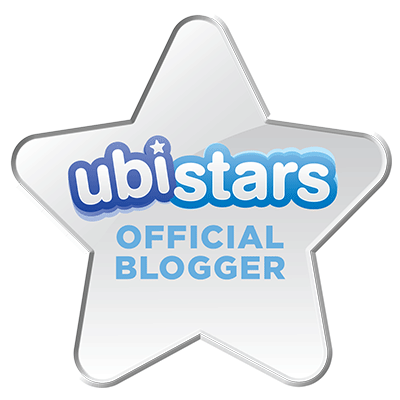Dyslexia presents unique challenges for children learning to read and write. Engaging in activities can significantly enhance literacy skills in dyslexic learners, making the process more enjoyable and effective. Well-designed activities tailored to dyslexic children’s needs can improve reading comprehension, phonological awareness, and overall literacy development.

Structured, multi-sensory learning programs offer the most benefit for dyslexic children. These approaches incorporate visual, auditory, and kinesthetic elements to reinforce learning. Computer-based reading games, for instance, can adapt to focus on a child’s weaknesses, providing targeted practice in a low-stress environment.
Parents and educators are important in supporting dyslexic children’s literacy journeys. By exploring dyslexia in children, they can help these learners overcome obstacles and build confidence in their reading abilities. From word games to interactive storytelling, a variety of activities can make literacy practice both fun and rewarding for dyslexic children.
Disclaimer: Not Medical Advice. This information is not intended as a substitute for professional medical advice, diagnosis, or treatment. Always seek the advice of your physician or other qualified healthcare provider with any questions you may have regarding a medical condition.
Key Takeaways
- Multi-sensory activities enhance literacy skills for dyslexic children
- Tailored, engaging exercises improve reading comprehension and phonological awareness
- Supportive adults and adaptive technologies are vital for dyslexic learners’ progress
Understanding Dyslexia and Its Impact on Literacy Development
Dyslexia is a complex learning disorder that affects reading and language processing skills. Recognizing the signs and assessing challenges are crucial steps in supporting students with dyslexia.
Defining Dyslexia and Recognizing the Signs
Dyslexia is a neurological condition that impacts reading abilities despite normal intelligence. Common signs include difficulty with phonological awareness, word recognition, and fluent reading. Students may struggle to match letters to sounds, decode words, or read at an age-appropriate pace.
Children with dyslexia often exhibit strengths in other areas, such as creativity or problem-solving. Early identification is key, as signs can appear as early as preschool. These may include delayed speech, trouble learning nursery rhymes, or difficulty remembering the names of letters.
In older students, signs can manifest as slow reading speed, poor spelling, and avoidance of reading tasks. It’s important to note that dyslexia exists on a spectrum, and symptoms can vary in severity among individuals.
Assessing Reading and Language Processing Challenges
Proper assessment of dyslexia involves a comprehensive evaluation of reading and language skills. This process typically includes:
- Phonological awareness tests
- Reading fluency and comprehension assessments
- Spelling and writing evaluations
- Working memory tasks
Specialists may use standardized tests to compare a student’s performance to age-appropriate norms. They also consider factors like family history, as dyslexia often has a genetic component.
The assessment aims to identify specific areas of difficulty and strengths. This information guides the development of targeted interventions and support strategies. It’s crucial to conduct assessments in a supportive environment to ensure accurate results.
Strategies for Improving Literacy Skills in Children with Dyslexia
Effective strategies for improving literacy skills in children with dyslexia involve structured approaches, targeted interventions, and assistive technologies. These methods address specific challenges and provide tailored support to enhance reading and writing abilities.
Devising Structured and Multisensory Literacy Programs
Structured literacy programs are crucial for children with dyslexia. The Orton-Gillingham approach and Wilson Reading System are widely recognized methods. These programs emphasize explicit instruction in phonics, phonemic awareness, and decoding skills.
Multisensory techniques engage multiple senses simultaneously. Children might trace letters while saying their sounds or use coloured blocks to build words. This approach strengthens neural connections and enhances learning.
Individualized instruction is key. Teachers assess each child’s strengths and weaknesses to create personalized learning plans. Regular progress monitoring allows for adjustments to the instruction as needed.
Early intervention is vital. Identifying and addressing dyslexia in the primary grades can significantly improve outcomes. Structured programs implemented early can help prevent reading difficulties from becoming entrenched.
Incorporating Phonics and Phonemic Awareness into Reading Instruction
Phonics instruction is essential for children with dyslexia. It teaches the relationship between letters and sounds, enabling students to decode unfamiliar words. Systematic phonics lessons cover letter-sound correspondences, blending, and segmenting.
Phonemic awareness focuses on identifying and manipulating individual sounds in spoken words. Activities might include rhyming games, sound blending, or breaking words into their component sounds.
Spelling instruction should be integrated with phonics and reading. Children learn to encode words by applying their knowledge of sound-letter relationships. Repeated practice with high-frequency words builds automaticity.
Fluency exercises help children read with greater speed and accuracy. Techniques like repeated reading, paired reading, and timed reading passages can improve fluency skills.
Utilizing Assistive Technologies and Alternative Formats
Text-to-speech software can be a valuable tool for children with dyslexia. It allows them to access written content by listening, reducing the cognitive load of decoding. This technology supports comprehension and vocabulary development.
Audiobooks provide another avenue for accessing literature. They allow children to enjoy stories at their intellectual level without being limited by their reading abilities. Listening while following along with print books can reinforce text recognition.
E-readers with adjustable fonts and spacing can make text more accessible. Some children find it easier to read with specific font types or colour overlays. Digital texts also offer the advantage of built-in dictionaries for quick word lookup.
Assistive writing tools, such as word prediction software and speech-to-text programs, can help children express their ideas more easily. These tools reduce the frustration associated with spelling difficulties and allow children to focus on content.
Conclusion
Activities play a crucial role in improving literacy skills for children with dyslexia. Multi-sensory techniques, structured programs, and technology-based interventions offer effective ways to enhance reading and writing abilities.
By engaging multiple learning pathways and providing targeted support, these activities help children develop foundational language skills. Regular practice with tailored exercises can lead to significant improvements in reading fluency and comprehension over time.
Collaboration between parents, educators, and specialists is key to implementing successful strategies and supporting children with dyslexia on their literacy journey.
















Add Your Comment